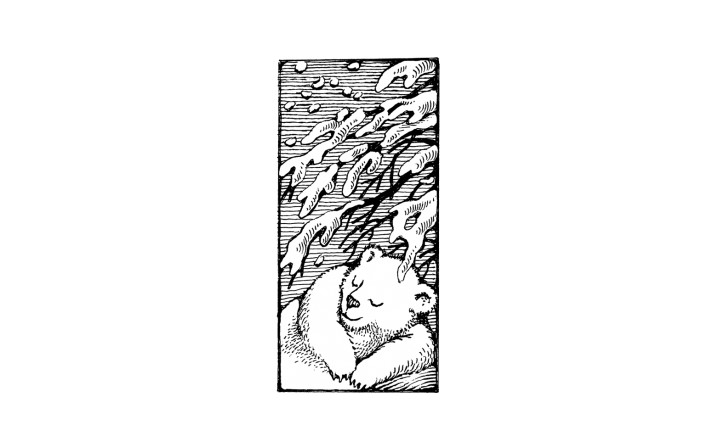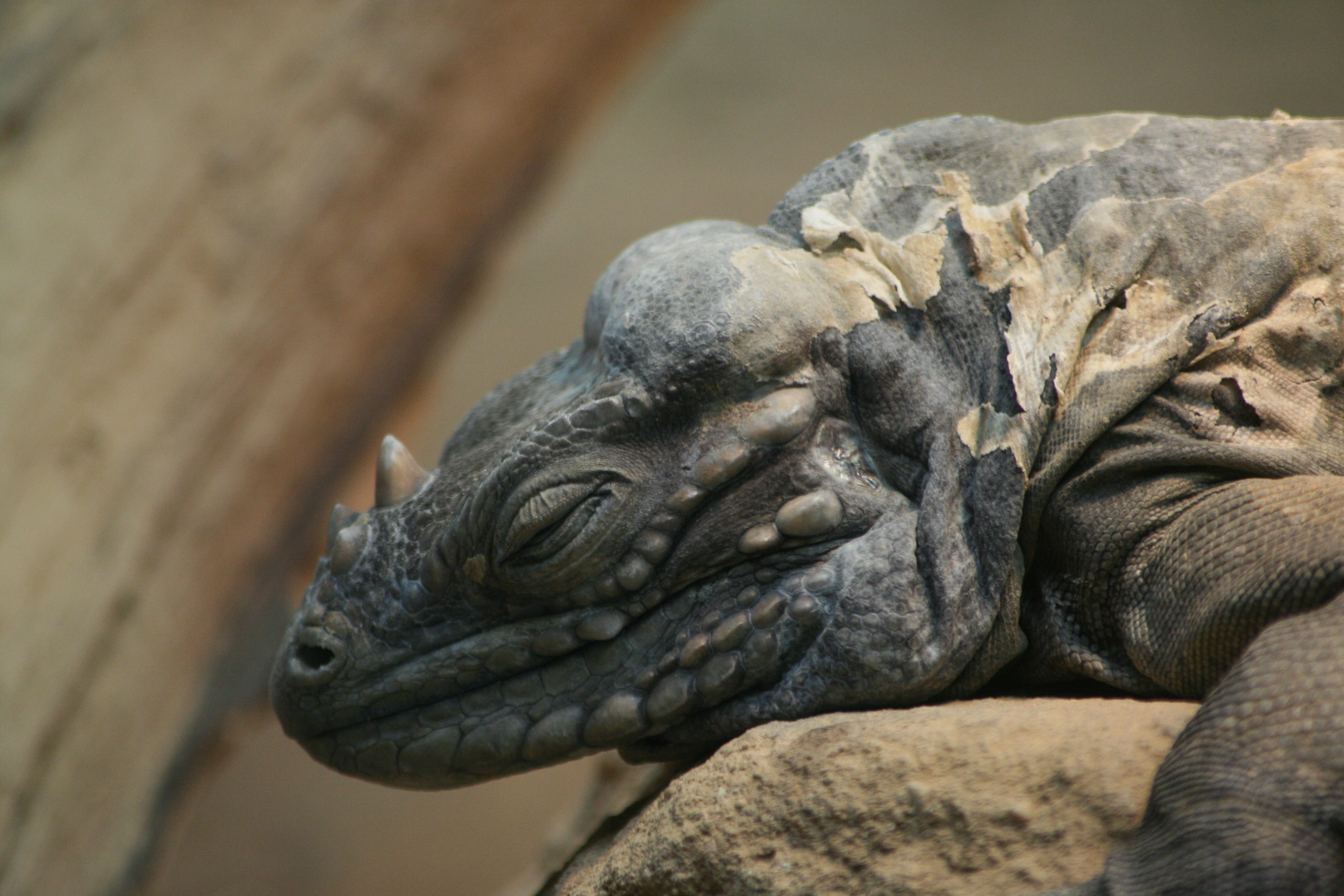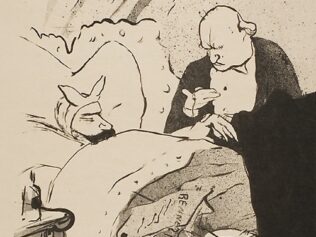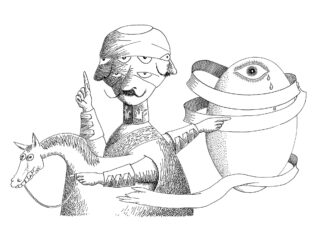
For months, they don’t move, don’t eat, don’t excrete, and sometimes even freeze, and yet, they wake up in spring in good condition. How do animals manage to survive hibernation? Some claim that we also possess this extraordinary skill.
According to an article published in 2015 by one of the two most significant scientific journals in the world, Nature, “The Great Sleep” started around the beginning of the fifteenth century. During that period, temperatures in the northern hemisphere fell. Then began a period of frosty winters and cool summer months, called the Ice Age. At the same time the number of knights was declining rapidly. Dragons lost food and warmth. Therefore, as the team of scientists led by Dr. Andrew J. Hamilton from Melbourne University in Australia claimed, they fell into a deep sleep and disappeared from the sight of humans. Nowadays, however, when Earth temperatures are growing fast and the fashion for knightly reenactments is trending, the authors of the paper, titled “Here be dragons,” warn the aforementioned mythical animals may well wake up and attack humans. “Further research into fireproof protective clothing is recommended,” they add at the end. And although there’s a note underneath the text that it was published on April Fool’s Day, so “part of its content may deserve some degree of skepticism,” it still gives a good introduction to the mystery of hibernation.
Waking Up to Sleep
The aforementioned authors are, after all, scientists. So they know very well that in many world regions there regularly comes the time that the cold and lack of food make life difficult for animals. In Poland, this period starts in November and usually lasts until March. Those animals that can, then fly to warmer climes where the food is more plentiful. Others, like wild boars, wolves or deer, try to survive despite hunger and cold. Still others, such as dragons, or real creatures like bears, hedgehogs, ground squirrels, and bats, fall into winter sleep, or more precisely, they hibernate. The more familiar one becomes with this state, the clearer it becomes that it’s quite different from slumber.
It’s enough to plug in a device that measures the bioelectric activity of the brain, called an electroencephalogram, or EEG. In a sleeping human or animal, the recording shows two alternating types of activity. In one, called paradoxical sleep or REM, the eyeballs move quickly under closed eyelids, numerous dreams are formed in the brain, and it is generally easier to wake up. In the second phase, called slow-wave sleep, or nREM, the eyes go quiet, there are fewer dreams and the body can get more rest. Neither of these states are registered in a hibernating brain. Brainwaves form a completely different pattern then; steady, calm, and slow.
That’s only up to a point, however. Dr. Brian Barnes from the University of Alaska in Fairbanks, USA, discovered that in Arctic ground squirrels that he examined, this pattern changes once every one to three weeks. The brain suddenly increases its activity, and after a few hours once again goes into a typical hibernation. The scientist claims that the ground squirrels then take a short nap. This happens because, while hibernating, they feel the lack of sleep stages—REM, as well as nREM. After a longer time they become sleepy. They wake up from hibernation to get some sleep.
Barnes’s research into Arctic ground squirrels revealed another peculiarity of hibernation, this time relating to body temperature. In warm-blooded organisms, during ordinary sleep, the temperature doesn’t fall more than half a degree. When the same animals go into hibernation, these limits no longer apply. Big ones, such as bears, lower their temperature by a few degrees. Smaller ones go all the way. For example dormice, small arboreal rodents, also found in Poland, have a body temperature during hibernation not much higher than that of their winter hideaway. Until it gets close to zero. Then the heating is turned on, which prevents the dormouse from freezing.
This magical limit, however, doesn’t worry Barnes’s ground squirrels. During hibernation, their body temperature drops to minus twenty-six degrees Fahrenheit. That means that the water in their bodies goes into a state of cooling. It doesn’t turn into solid only because of the lack of crystallization nuclei, around which ice could be formed. It only needs a few such crumbs though, for all the water in the ground squirrels to freeze. And because ice has a larger capacity, it would burst the cells, and damage the tissues and organs. Luckily, this doesn’t happen in ground squirrels.
The Stomach Freezes, the Brain Shrinks
Cold-blooded animals cope even better than ground squirrels in this competition. Among them, the wood frog, common in North America, leads the way. Just before winter, it buries itself a few inches under leaves and branches. When the frost comes, it freezes. “If you were on a winter hike and accidentally kicked one of these ‘frogsicles’ out into the open, you’d undoubtedly assume it was dead,” writes Dr. Sharon Moalem in the book Survival of the Sickest. “When completely frozen, it might as well be in suspended animation—it has no heartbeat, no breathing, and no measurable brain activity. Its eyes are open, rigid, and unnervingly white.”

Contrary to ground squirrels, the ice in the frog’s body actually forms. However, it has to somehow defend itself from the damage of its tissues and organs. Professor Ken Storey, a biochemist from Canada’s Carleton University in Ottawa, discovered that when the wood frog’s skin detects that the temperature is below freezing, the water in its body starts leaking out from its tissues, organs, and blood. The animal doesn’t get rid of it, though, but collects it in its stomach. At the same time, the liver pumps huge quantities of glucose into the blood. In effect, sugar levels rise a hundredfold. Due to such great density, the freezing temperature of the blood is decidedly lower than thirty-two degrees Fahrenheit. Even if ice finally forms there, it has a smaller, softer quality, which does not destroy cells. Storey found thin sheets of ice between the skin and the leg muscles, where it doesn’t damage organs. A sizable lump of ice in the stomach surrounds the dehydrated organs, which are stuck in it like soft raisins in stale dough. And if that wasn’t enough, a hibernating frog produces large amounts of fibrinogen protein, which is responsible for blood clotting and helps repair damage caused by freezing.
Warm-blooded animals, however, don’t use such advanced techniques. But their bodies also dramatically change during hibernation. Prior to winter, they deposit so much fat tissue in their bodies that their mass can double—which may barely be enough for a few months of not eating anyway. Hibernating animals try to use these reserves very sparingly. That’s why they lower their body temperature; energy demand decreases, and fat burning occurs much slower. Thus, the demand for oxygen also falls. During hibernation, ground squirrels only use around two or three percent of the life-giving gas, which they need during normal activity. The same applies to other animals. It happens that the number of respiratory frequencies in bats falls to one per hour, and the heart rate drops from two to three hundred, to three to four beats per minute. The animals often don’t urinate or defecate. At the same time, their brain cells shrink and reduce the number of synaptic connections by sixty percent. They hardly move, spending long weeks, or even months in the same position. If a human were to lie for that long, they would end up seriously debilitated. The muscles would atrophy, the bones would decalcify, and the kidneys, heart, and brain would suffer irreversible damage. Not to mention that the high fatness, as the introduction to hibernation, would lead to a higher risk of heart disease, cancers, and type 2 diabetes.
Hibernation for Heart Attacks, Diabetes, and Alzheimer’s
Solving the mystery of how hibernating animals can avoid all these diseases and biological depletion is the aim of a lot of research on hibernation. In fact, this field already straddles both zoology and medicine. Doctors already practice lowering the body temperature of patients by a few degrees after cardiac arrest, or during open-heart surgery. The problem is the muscle tremors that occur in such situations. “Physicians prevent shivering with narcotics and paralytics and other common classes of drugs,” Professor Kelly Drew from University of Alaska in Fairbanks told Wired magazine. “But ground squirrels are revealing brain pathways that could be tapped to make induction of hypothermia smoother and safer in humans.” The scientist discovered the molecule which activates hibernation in those rodents. When she administered it to rats, who naturally do not go into winter sleep, they entered a state similar to hibernation, under the condition that they were in a cool environment. If applied to humans, they could be put into a state of sleep and slow down their reactions. This would not only make operations easier, but may also enable long-term space travel. The hibernating could travel beyond our solar system, but it cannot be ruled out that they would have to wake up every two or three weeks to go to sleep.
There seems to be a bit more progress in hibernation research for treating type 2 diabetes. Patients with this disease produce the insulin hormone responsible for lowering sugar levels, but their cells are less sensitive to it and they don’t react like they do in healthy people. Researchers from the University of Tennessee have discovered a similar phenomenon in hibernating American black bears. As soon as they go into winter sleep, their cells become resistant to insulin and don’t absorb sugar from the blood. However, come spring and the bears return to normal life, they regain the previously lost sensitivity to the hormone. If we could understand this mechanism, it might become the foundation of a long-awaited drug for type 2 diabetes.
There are similar hopes for studies on the brains of hibernating animals. The reduced number of synaptic connections is restored in them as soon as they wake up. The mechanism which restores these lost links between neurons could be useful in treating Alzheimer’s disease. Changes in the heart and bones of hibernating animals is also of interest to scientists. The success of this research might allow the development of therapies for heart attacks or ostheoperosis, or improve transplant tolerance.
People Also Want to Sleep
Our species not only does not hibernate, but it also belongs to the order of primates, where such a phenomenon does not exist—at least, that’s what was thought until recently. Later it was discovered that in Madagascar lives a dwarf lemur, which enters estivation, a state similar to hibernation, except it does so not in winter, but in summer. This way, it protects itself from lack of water in the dry season. It is not an exception, there are two more types of lemurs which go into estivation.
In 2015, it was discovered that a small strepsirrhine primate from Vietnam, known as the pygmy slow loris, possesses an ability even more similar to typical hibernation. Lorises lower their temperature and slow their metabolism between December and February. In the jungle, where they live, typical winters don’t exist, but the air temperature goes down to about forty-one degrees Fahrenheit, and food availability decreases. “Our new finding of a hibernating primate species outside Madagascar sheds new light on the evolution of hibernation,” wrote the research team led by Veterinärmedizinische Universität in Vienna’s Dr. Thomas Ruf in 2015. “Possibly, hibernation as an overwintering strategy was lost in other primates in Africa, Asia, and the Americas. However, perhaps hibernation is also used by further primate species, which have not been studied yet.”
There is even speculation that the genes enabling hibernation exist in most mammals, only they do not manifest. It cannot be ruled out that this ability may also be dormant in humans. After all, there have been several reports of people surviving long periods of time in extreme cold. In May 1999, a skier was pulled out of ice-cold water in Norway. She had spent more than an hour there, wasn’t breathing, and her body temperature dropped to fifty-seven degrees Fahrenheit. A rescue operation brought her back to health. The state the woman had gone through could be considered a kind of short-term hibernation. Could it be, then, that people are able to fall into winter sleep of their own accord? If this were true, then it would cause a greater sensation than the awakening of dragons from the Great Sleep.










